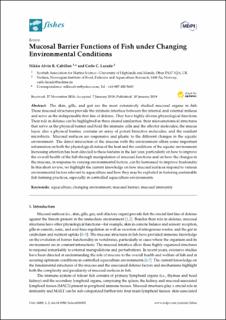| dc.description.abstract | The skin, gills, and gut are the most extensively studied mucosal organs in fish. These mucosal structures provide the intimate interface between the internal and external milieus and serve as the indispensable first line of defense. They have highly diverse physiological functions. Their role in defense can be highlighted in three shared similarities: their microanatomical structures that serve as the physical barrier and hold the immune cells and the effector molecules; the mucus layer, also a physical barrier, contains an array of potent bioactive molecules; and the resident microbiota. Mucosal surfaces are responsive and plastic to the different changes in the aquatic environment. The direct interaction of the mucosa with the environment offers some important information on both the physiological status of the host and the conditions of the aquatic environment. Increasing attention has been directed to these features in the last year, particularly on how to improve the overall health of the fish through manipulation of mucosal functions and on how the changes in the mucosa, in response to varying environmental factors, can be harnessed to improve husbandry. In this short review, we highlight the current knowledge on how mucosal surfaces respond to various environmental factors relevant to aquaculture and how they may be exploited in fostering sustainable fish farming practices, especially in controlled aquaculture environments. | |
